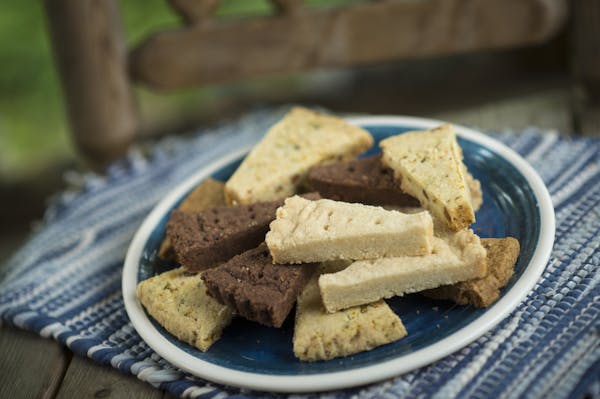Picnic desserts are simpler desserts.
Humidity keeps us from puffy meringues, and heat denies any flourless chocolate goo-fests or sweets best kept chilled until served. There are fewer frostings and drizzles and fuss.
Fruit often gets center stage, especially when foods need to withstand a certain amount of jostling until the blanket is spread.
Still, even fruit needs a cookie. But not the usual run of crinkle-doodle-snapper-chipper-roos that gets us through the school year.
Summer is for shortbread.
The recipe is simplicity itself: flour, sugar and butter in the right proportions. Which means, to be honest, butter, flour and sugar.
The "short" means that the amount of flour seems scant compared with most cookies. You want just enough to hold the mixture together.
Nor should the flour bring any muscle to the beach party. Shortbread calls for basic all-purpose, and even some of that is replaced with even finer rice flour for the most delicate texture possible. (Save the whole wheat for the burger buns.)
Shortbread dough is barely dough, as well. Small chunks of butter are beaten with the flour and sugar until the mixture looks like fine meal. Pinch it, and it will hold together, but you don't want to mix until it becomes a cohesive dough.
Press it into a pan with the back of a spoon or a flat-bottomed glass. Too much handling will soften the butter and make the shortbread more firm and less tender.
We're indebted to "Baking Illustrated," from the editors of Cook's Illustrated magazine, for several tips that we found spot-on for success.
Among them: Cut a small round from the center of the pan of dough. This ensures that the shortbread bakes through before the outer edges become overbaked and dry. We used a 1½-inch cookie cutter, but you could also cut out a round with a sharp knife.
(This nugget, baked on a folded piece of aluminum foil for half the usual time, becomes the baker's treat.)
Shortbread is distinctive for scored lines meant to ease the final cutting into pieces. The Cook's Illustrated folks found that this is better done after 20 minutes of baking.
Remove the pan from the oven, then gently press lines into the now-softer dough, poking a few decorative holes with a skewer if desired, then continue baking.
Still, in later cutting the shortbread pieces into smaller servings, we found that each fantail could easily be halved with steady downward pressure of a large knife, without the benefit of any scoring lines. So, your call.
Also your call: Go with the classic butter-forward recipe, or try some of our variations. We added cocoa, espresso powder and cayenne pepper to a batch, orange zest and chopped pistachios to another, and swapped in brown sugar for white sugar in yet another, topping that with a bit of coarse Hawaiian salt. Delish.
Final selling points: Tender shortbread is surprisingly transportable, and its texture actually improves with a day's "ripening," making it an ideal make-ahead treat, keeping summer even simpler.
Kim Ode • 612-673-7185
